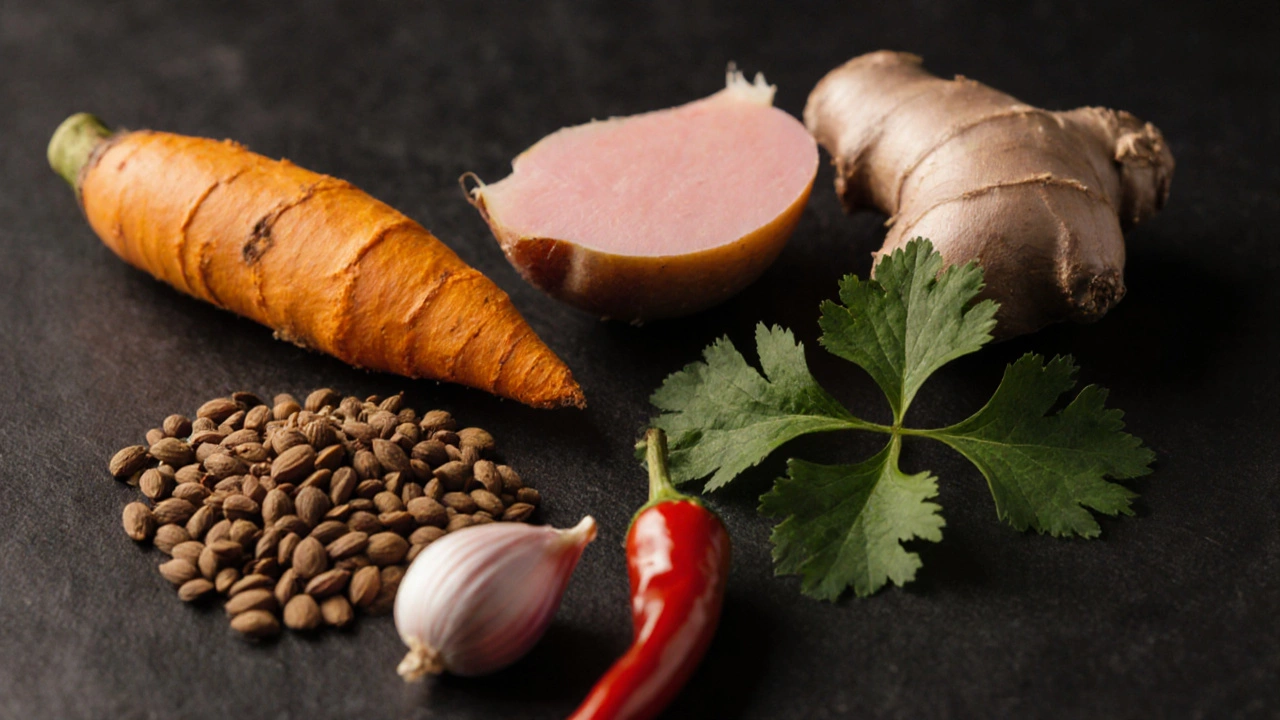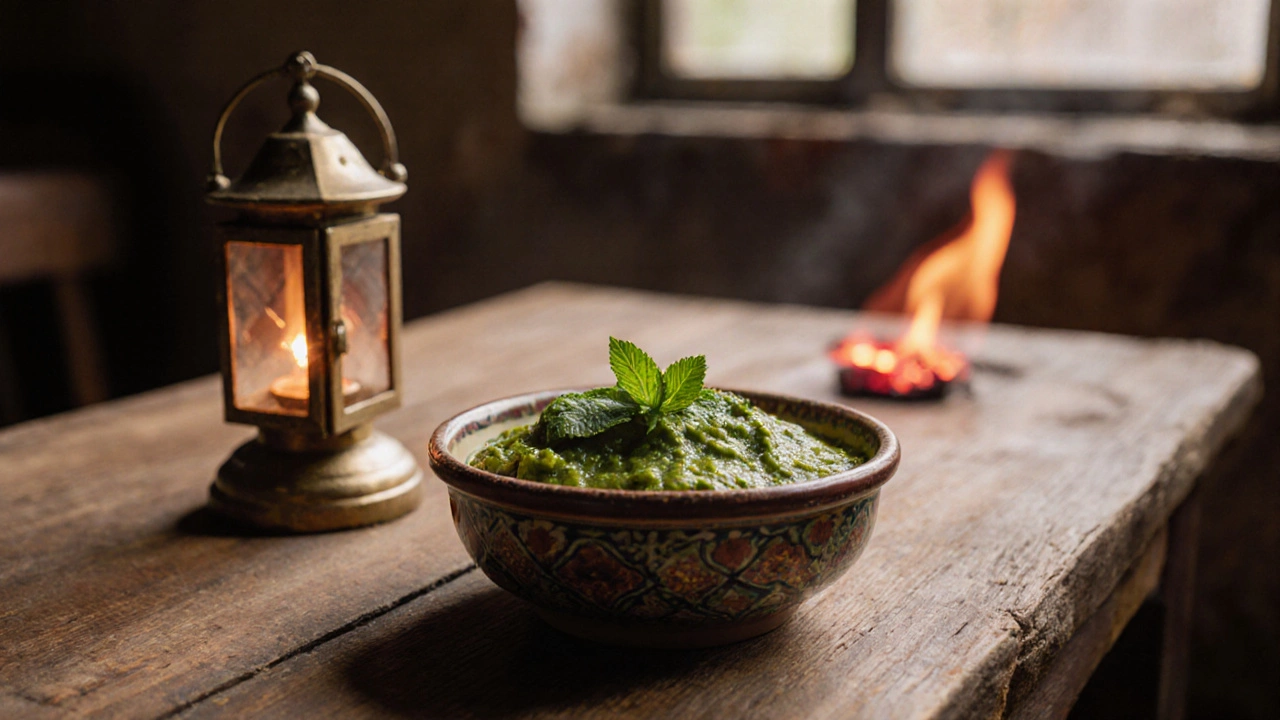Anti-Inflammatory Chutney Checker
Check Your Chutney's Health Benefits
When you hear the word chutney is a flavorful Indian condiment made by blending fruits, vegetables, herbs and spices, you probably picture a tangy side dish on the dinner table. The question that pops up most often on health forums is: chutney anti-inflammatory?
What inflammation really means
Inflammation is the body’s alarm system. Short‑term inflammation helps you heal a cut or fight an infection, but chronic low‑grade inflammation sneaks into daily life and fuels conditions like arthritis, heart disease, and even mood disorders. Scientists agree that diet is a major modulator - foods rich in antioxidants, polyphenols, and certain spices can calm the fire.
How chutney fits into an anti‑inflammatory diet
Traditional Indian chutneys are packed with ingredients that have been studied for their anti‑inflammatory punch. Below are the most common players and what the research says.
- Turmeric is a bright yellow spice containing curcumin, a powerful anti‑inflammatory compound. Clinical trials show curcumin can reduce markers like C‑reactive protein (CRP) by up to 30% when taken consistently.
- Ginger is a root that delivers gingerol, which inhibits pro‑inflammatory cytokines. A 2022 meta‑analysis linked daily ginger intake to lower joint pain scores.
- Cumin is a seed rich in antioxidants like flavonoids. In animal models, cumin extract lowered IL‑6 levels, a key inflammatory marker.
- Coriander is a leaf and seed used for its polyphenol content. Studies on coriander oil suggest it can suppress NF‑κB activation, a pathway that drives inflammation.
- Garlic is a bulb whose sulfur compounds (allicin, DADS) have documented anti‑inflammatory effects. Regular garlic consumption is associated with a 15% drop in CRP levels.
- Capsaicin is a compound from hot chilies that desensitizes pain receptors and reduces inflammatory mediators. Topical capsaicin creams are prescribed for arthritis, and oral intake shows similar trends.
- Antioxidants are molecules that neutralize free radicals, preventing oxidative stress that fuels inflammation. Most chutney ingredients-especially tamarind, mango, and leafy herbs-are natural sources.
- Omega‑3 fatty acids are polyunsaturated fats that shift the body toward anti‑inflammatory eicosanoids. Adding ground flaxseed or chia seeds to a chutney gives a modest Omega‑3 boost.
Scientific evidence at a glance
| Ingredient | Active compound | Primary anti‑inflammatory action |
|---|---|---|
| Turmeric | Curcumin | Inhibits NF‑κB, lowers CRP |
| Ginger | Gingerol | Blocks COX‑2, reduces cytokines |
| Cumin | Flavonoids | Scavenges free radicals |
| Coriander | Polyphenols | Suppresses NF‑κB pathway |
| Garlic | Allicin | Reduces IL‑6, TNF‑α |
| Chili (Capsaicin) | Capsaicin | Desensitises TRPV1 receptors |
| Tamarind & mango | Vitamin C & polyphenols | Boosts antioxidant capacity |
Notice a pattern? Most of these compounds target the same inflammatory pathways - NF‑κB, COX‑2, and cytokine release. When you blend them together, the effects can be additive, not just isolated.

Tips to maximise the anti‑inflammatory power of your chutney
- Use fresh, organic produce. Pesticide residues can provoke inflammation, so choose clean ingredients.
- Include a pinch of black pepper. Piperine in pepper boosts curcumin absorption by up to 2000%.
- Don’t over‑cook. Heat degrades some volatile compounds like gingerol; lightly simmer or keep raw for a fresher profile.
- Balance acidity. A splash of lemon or lime improves vitamin C content, which works hand‑in‑hand with antioxidants.
- Add a source of healthy fat. A teaspoon of mustard oil or a drizzle of olive oil helps fat‑soluble compounds (curcumin, capsaicin) get absorbed.
- Mind the sugar. Traditional sweet chutneys often use a lot of jaggery or sugar, which can counteract anti‑inflammatory benefits. Use natural sweeteners sparingly.
Quick anti‑inflammatory chutney recipe
Here’s a simple, everyday version you can whip up in 15 minutes. It’s perfect as a dip for grilled paneer, a spread on whole‑grain toast, or a topping for roasted veggies.
- 1 cup fresh cilantro leaves (plus a few stems)
- ½ cup mint leaves
- 1 small green chili, seeds removed (adjust heat)
- 1 tsp freshly grated ginger
- ½ tsp turmeric powder (or ¼ tsp fresh grated turmeric)
- 1 clove garlic
- 1 tbsp lemon juice
- ½ tsp roasted cumin powder
- ¼ tsp black pepper
- 1 tsp olive oil
- Salt to taste
Blend everything until smooth, adding a splash of water if needed. Taste and adjust salt or lemon. Store in a glass jar; it stays fresh for up to three days in the fridge.

When chutney might not be the best choice
Even the healthiest chutney can become a problem if you overdo it. High sugar, excessive oil, or large serving sizes add calories and may promote inflammation. Also, some people are sensitive to nightshade capsicum, so hot chilies could trigger flare‑ups for them.
Bottom line
Chutney itself isn’t a magic bullet, but most of its core ingredients are scientifically linked to lower inflammatory markers. By choosing fresh, low‑sugar recipes and adding absorption boosters like black pepper and healthy fats, you turn a tasty condiment into a genuine ally for an anti‑inflammatory diet.
Can store‑bought chutney be anti‑inflammatory?
Most commercial chutneys contain added sugars, preservatives, and high sodium, which can offset the anti‑inflammatory benefits of the spices. Look for brands that list minimal ingredients, no added sugar, and a short ingredient list, or make your own.
How much chutney should I eat daily for health benefits?
A serving of about 2 tablespoons is enough to get a dose of anti‑inflammatory compounds without loading up on calories or sugar.
Is turmeric enough on its own to reduce inflammation?
Turmeric helps, but curcumin’s absorption is low. Pair it with black pepper or a bit of fat to see a noticeable effect.
Can I add nuts or seeds to boost omega‑3s?
Yes! Ground flaxseed, chia seeds, or chopped walnuts blend well into thick chutneys and add a modest omega‑3 boost.
Is there any risk of allergic reactions?
Allergy risk is usually tied to specific ingredients like garlic, nuts, or certain peppers. If you’re uncertain, start with a tiny amount and watch for symptoms.
Next steps
Pick a simple recipe, stock the pantry with the key spices, and experiment with the tips above. Track how you feel - many people notice less joint stiffness or clearer skin within a few weeks of adding anti‑inflammatory chutney to meals.
